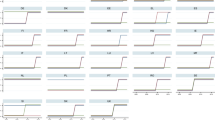Abstract
The fifty U.S. states employ a wide variety of fiscal institutions designed to constrain state tax and expenditure policy. Some, such as balanced budget requirements and supermajority rules for tax increases, have been proposed for the federal government. Others, such as budgetary line-item-veto authority have even been enacted by Congress, but have since been ruled unconstitutional at the federal level. Advocates typically point to the states as examples from which federal policy makers can learn, but to date there is very little systematic evidence on the effectiveness of these state institutions, either individually or in concert. Furthermore, what evidence exists struggles to deal with two difficult empirical problems: the endogenous nature of the fiscal institutions, and their interactions with one another. This paper describes six of the most important state-level fiscal institutions, presents existing and new evidence regarding their consequences, and discusses empirical strategies for handling their complex endogenous and interactive character.
Access this chapter
Tax calculation will be finalised at checkout
Purchases are for personal use only
Preview
Unable to display preview. Download preview PDF.
Similar content being viewed by others
References
Abrams, Burton and William Dougan (1986) “The Effects of Constitutional Restraints on Government Spending”, Public Choice 49 101–116.
Advisory Commission on Intergovernmental Relations (ACIR) (1987) Fiscal Discipline in the Federal System: Experience of the States. Washington, DC.
Advisory Commission on Intergovernmental Relations (ACIR) (1995) Significant Features of Fiscal Federalism. Washington, DC.
Alesina, Alberto and Tamim Bayoumi (1996) “The Costs and Benefits of Fiscal Rules: Evidence from U.S. States”, NBER Working Paper #5614, June.
Alm, James and Mark Evers (1991) “The Item Veto and State Government Expenditures”, Public Choice, 68 1–15.
Alt, James E. and Robert C. Lowry (1994) “Divided Government, Fiscal Institutions, and Budget Deficits: Evidence from the States”, American Political Science Review 88(4) 811–828.
Baicker, Katherine (1997) “Government Decision-Making and the Incidence of Federal Mandates” working paper Harvard University.
Bernheim, Douglas (1989) “A Neoclassical Perspective on Budget Deficits”. Journal of Economic Perspectives 3(2) 55–72.
Bohn, Henning and Robert P. Inman (1996) “Balanced Budget Rules and Public Deficits: Evidence from the U.S. States” NBER Working Paper #5533, April.
Briffault, Richard (1996) Balancing Acts: The Reality Behind State Balanced Budget Requirements. Washington DC: Twentieth Century Fund.
Burtless, Gary and Wayne Vroman (1984). “The Performance of Unemployment Insurance Since 1979”, Industrial Relations Research Association Series (December) cited in Gramlich (1987).
Carter, John and David Schap (1990) “Line-Item Veto: Where is thy Sting?”, Journal of Economic Perspectives 4 103–118.
Chari, V, Larry Jones and Ramon Marimon (1997) “The Economics of Split-Ticket Voting in Representative Democracies”. American Economic Review 87 957–976.
Dearden, James and Thomas Husted (1993) “Do Governors Get What They Want?: an Alternative Examination of the Line-Item Veto”. Public Choice 77 707–723.
Elder, Harold (1992) “Exploring the Tax Revolt: an Analysis of the Effects of State Tax and Expenditure Limitation Laws”. Public Finance Quarterly 20 47–63.
Fisher, Ronald (1996) State and Local Public Finance. Chicago: Irwin.
General Accounting Office (GAO) (1993) Balanced Budget Requirements: State Experiences and Implications for the Federal Government. GAO/AFMD-93-58BR, March.
Gold, Steven D (1981) “The Struggles of 1981: Budget Actions in the States”, State Legislatures. July/August.
Gold, Steven D. (1984) “Contingency Measures and Fiscal Limitations: The Real World Significance of Some Recent State Budget Innovations”. National Tax Journal 37(3) 421–432, September.
Gramlich, Edward M. (1987) “Subnational Fiscal Policy”, in John M. Quigley (ed.) Perspectives on Local Public Finance and Public Policy. JAI Press: London.
Holcombe, Randall and Russell Sobel (1996) “The Impact of Rainy Day Funds in Easing State Fiscal Crises During the 1990-1991 Recession”, Public Budgeting and Finance. 16(3) 28–48.
Holtz-Eakin, Douglas (1988) “The Line Item Veto and Public Sector Budgets: Evidence from the States”, Journal of Public Economics 36 269–292.
Knight, Brian (1998)a) “Supermajority Voting Requirements for Tax Increases: Evidence from the States”, working paper, University of Wisconsin, Madison.
Knight, Brian (1998)b) “Fiscal Effects of Unfunded Mandates: Evidence from State Reimbursement Requirements”, working paper, University of Wisconsin, Madison.
Levinson, Arik (1998) “Balanced Budgets and Business Cycles: Evidence from U.S. States”, National Tax Journal, December, 1998.
Marston, Steven T. (1985) “Two Views of the Geographic Distribution of Unemployment”, Quarterly Journal of Economics (February).
Matsusaka, John (1995) “Fiscal Effects of Direct Legislation: Evidence from the Last 30 Years”, Journal of Political Economy 103 587–623.
National Association of State Budget Officers (NASBO) (1989) Budget Processes of the States. Washington DC: NASBO.
National Association of State Budget Officers (NASBO) (1998) Budget Processes of the States. Washington DC: NASBO.
Oates, Wallace E. (1972) Fiscal Federalism. New York: Harcourt Brace Jovanovich.
Poterba, James M. (1994) “State Responses to Fiscal Crises: The Effects of Budgetary Institutions and Politics”. Journal of Political Economy 102(4) 799–821.
Poterba, James M. (1996) “Budget Institutions and Fiscal Policy in the U.S. States”, American Economic Review: Papers and Proceedings 86(2) 395–400.
Regional Science Research Institute (RSRI) (1981) “State Input-Output Models for Transportation Impact Analysis”, Mimeo cited in Gramlich (1987).
Romer, Christina D. (1986) “Is the Stabilization of the Postwar Economy a Figment of the Data?” American Economic Review 76(3) 314–334.
Rueben, Kim (1995) “Tax Limitations and Government Growth: the Effect of State Tax and Expenditure Limits on State and Local Government”, working paper, MIT.
Strauch, Rolf (1998) “The Strategic Structure of the Budget Process — Evidence from the U.S. States”, working paper, University of Bonn.
Temple, Judy (1998) “State Revenue and Supermajority Limitations, Unobserved State Effects, and State Revenue Growth”, working paper, Northern Illinois University.
Author information
Authors and Affiliations
Editor information
Rights and permissions
Copyright information
© 2000 Springer Science+Business Media New York
About this chapter
Cite this chapter
Knight, B., Levinson, A. (2000). Fiscal Institutions in U.S. States. In: Strauch, R.R., von Hagen, J. (eds) Institutions, Politics and Fiscal Policy. ZEI Studies in European Economics and Law, vol 2. Springer, Boston, MA. https://doi.org/10.1007/978-1-4615-4555-2_7
Download citation
DOI: https://doi.org/10.1007/978-1-4615-4555-2_7
Publisher Name: Springer, Boston, MA
Print ISBN: 978-1-4613-7056-7
Online ISBN: 978-1-4615-4555-2
eBook Packages: Springer Book Archive




